At the end of January, National Plan for Vacation Day reminds us to start looking for our next summer adventure. I fully support planning ahead (especially if you want to reserve a lookout tower!), but I am also here to remind you to live in the moment. There is still plenty of time to have your next winter adventure before the snow melts!
From downhill skiing to ice fishing, National Forests are a great place to start looking for your next winter adventure.
Downhill Skiing and Snowboarding
If you have ever gone downhill skiing or snowboarding, chances are you were on a National Forest. Skiing is the second most popular activity on National Forests behind hiking and draws 23 million visits to National Forests every year (that is nearly half of all ski visits in the U.S.!).
National Forests host 122 ski areas across the country, including iconic resorts like Vail, Snowbird, and Mammoth, but there are plenty of quieter areas too for visitors that want to avoid the crowds.
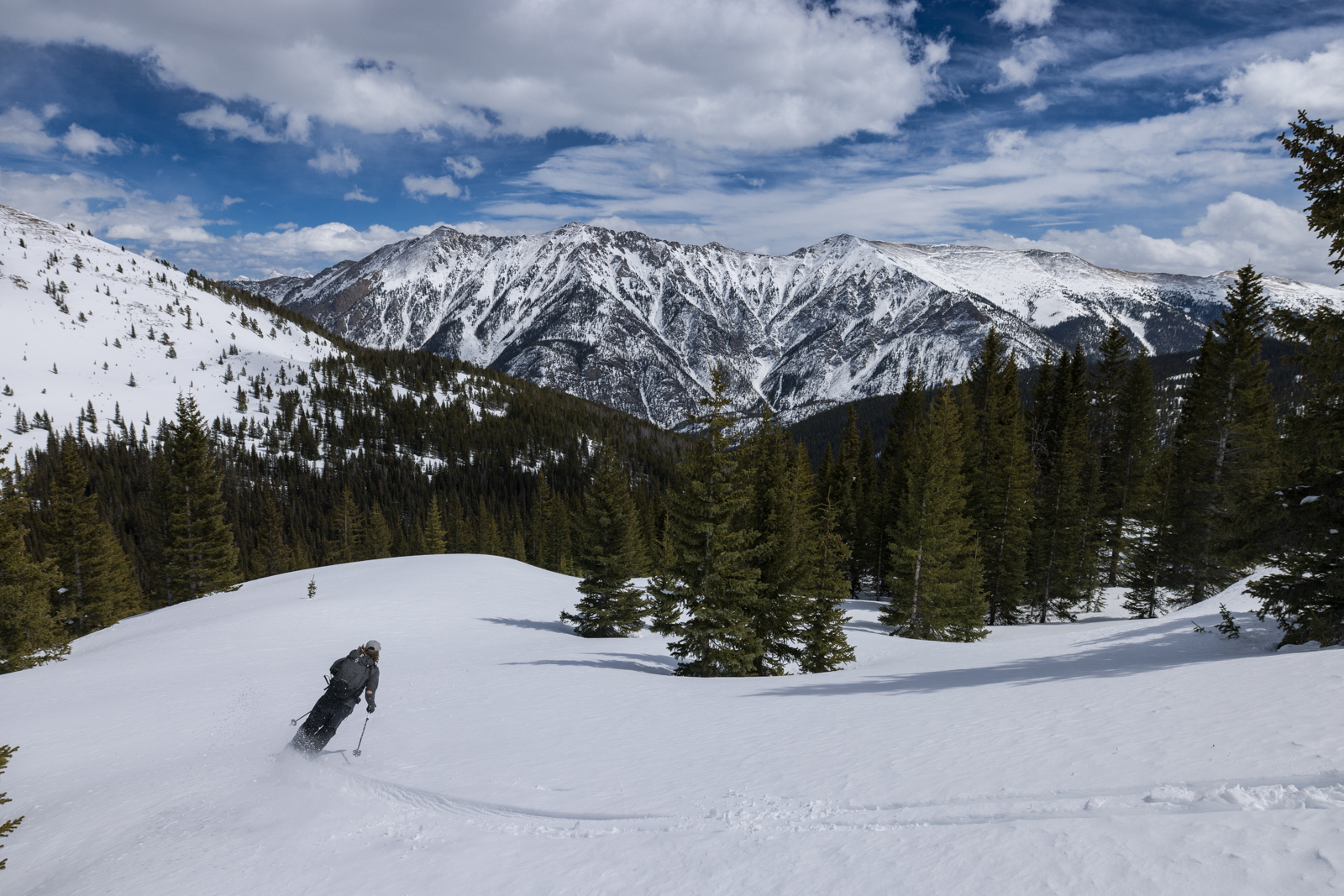
Skiing down the slopes of the White River National Forest. Photo by Ian Zinner.
White River National Forest
Nestled in the heart of the Rocky Mountains, Colorado’s 2.3-million-acre White River National Forest is a skier’s paradise with 11 downhill ski areas to choose from. The Forest’s Eagle-Holy Cross Ranger District is home to the state's largest and most iconic ski resort, Vail. Known for its world-class accommodations, three distinct mountain areas, three terrain parks, and seven bowls, Vail has a winter adventure for every kind of skier from beginner runs to classic big-mountain skiing.
If you are looking for a spot that is a bit more affordable, but still has great snow and diverse terrain, try Arapahoe Basin or Copper Mountain on the Dillion Ranger District. Other popular ski areas on the White River National Forest include Beaver Creek, Breckenridge, Keystone, and Aspen.
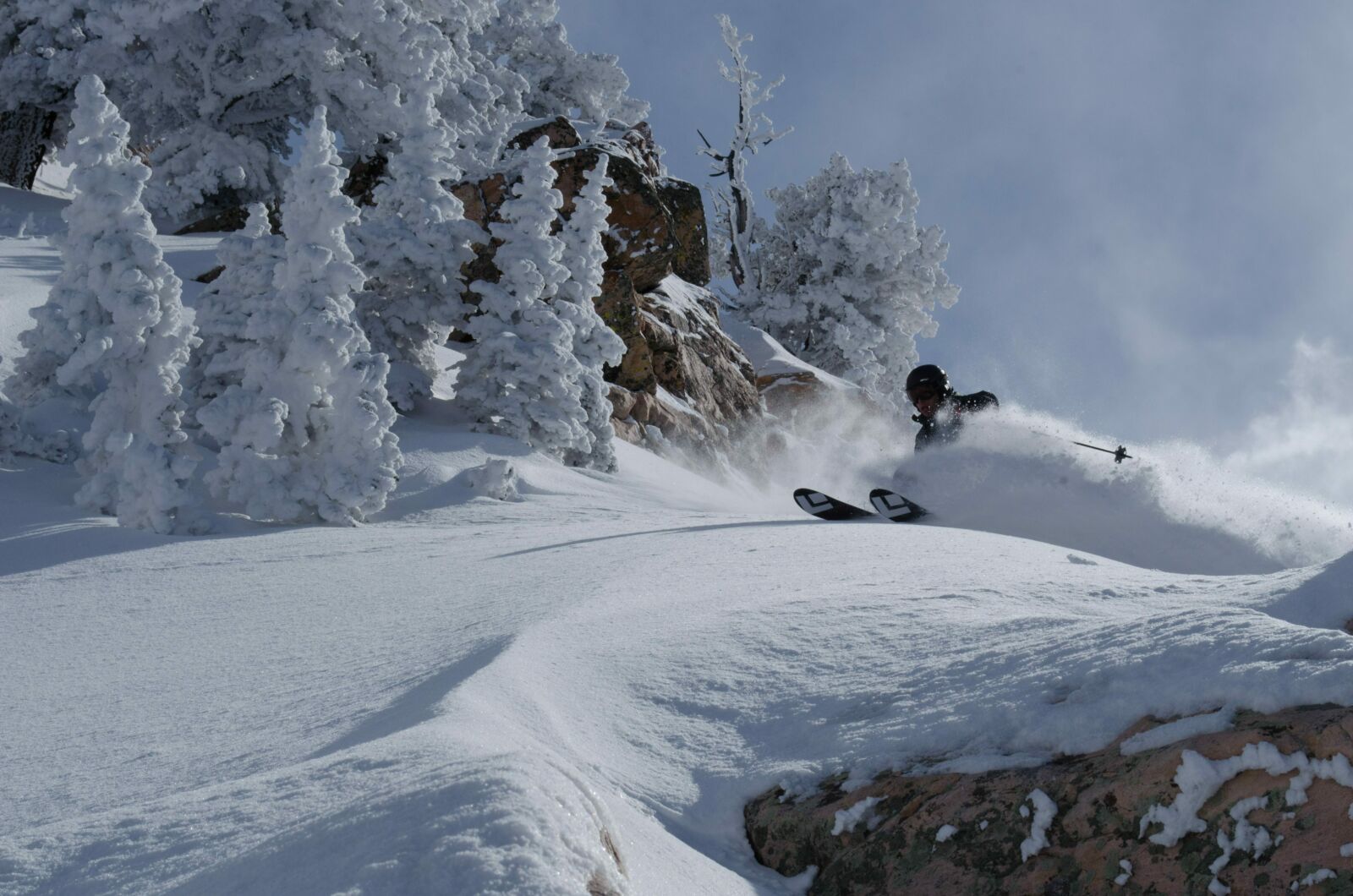
Skiing through the Snowbasin backcountry on the Uinta-Wasatch-Cache National Forest. Photo by the U.S. Forest Service.
Uinta-Wasatch-Cache National Forest
Home to “The Greatest Snow on Earth,” Uinta-Wasatch-Cache's powder draws millions of visitors to Utah’s Wasatch Mountains each winter. What makes the snow so great? Many believe Utah snow is the best for deep powder skiing due to the area’s frequent and predictable snowstorms.
Four of the Forest’s five alpine ski resorts are easily accessible from Salt Lake City: Brighton, Alta, Solitude, and Snowbird. Each offers a different experience – Alta is for skiers only, Brighton attracts more snowboarders, Solitude offers pristine terrain, and Snowbird is renowned for its luxury accommodations. With a good mix of beginner and expert terrain, Brighton is a great place to start.
Cross-Country Skiing and Snowshoeing
If the crowds at ski resorts aren’t for you, cross-country skiing or snowshoeing can be a great way to enjoy the solitude of National Forests in winter. With everything from Nordic centers where beginners can find help with lessons and equipment, to groomed trails where experienced skiers can test their technique, National Forests are full of cross-country adventures for all ages and abilities.
Before heading out, always be sure to check with the local ranger district or avalanche.org for avalanche danger in the area (you can read more about avalanche safety here).
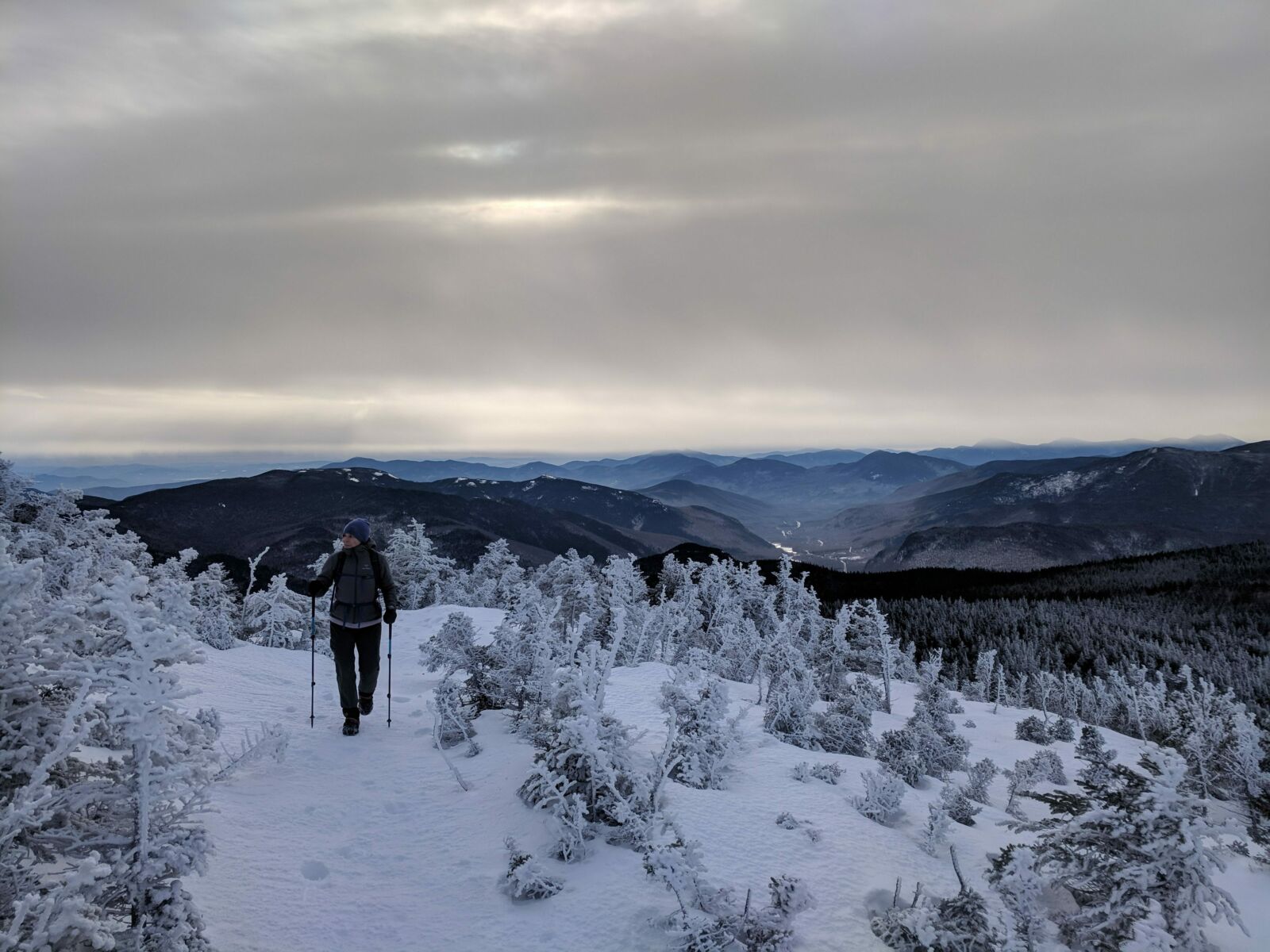
Snowshoer on the White Mountain National Forest. Photo by Andrew Skrabak.
White Mountain National Forest
Skiing on National Forests isn’t limited to the West. With an average of 150 inches of snow a year, New Hampshire’s White Mountain National Forest draws nearly one million skiers to its slopes and backcountry trails every winter. Hundreds of miles of trails crisscross the mountain range, providing skiers with endless opportunities for classic skiing, skate skiing, and unlimited backcountry skiing.
Six different Nordic centers across the Forest provide easy access to trails and offer lessons and rentals, making them a great base camp for beginners. Bear Notch Nordic Center will also allow dogs on their trails, making it the perfect place for skijoring with your furry friends.
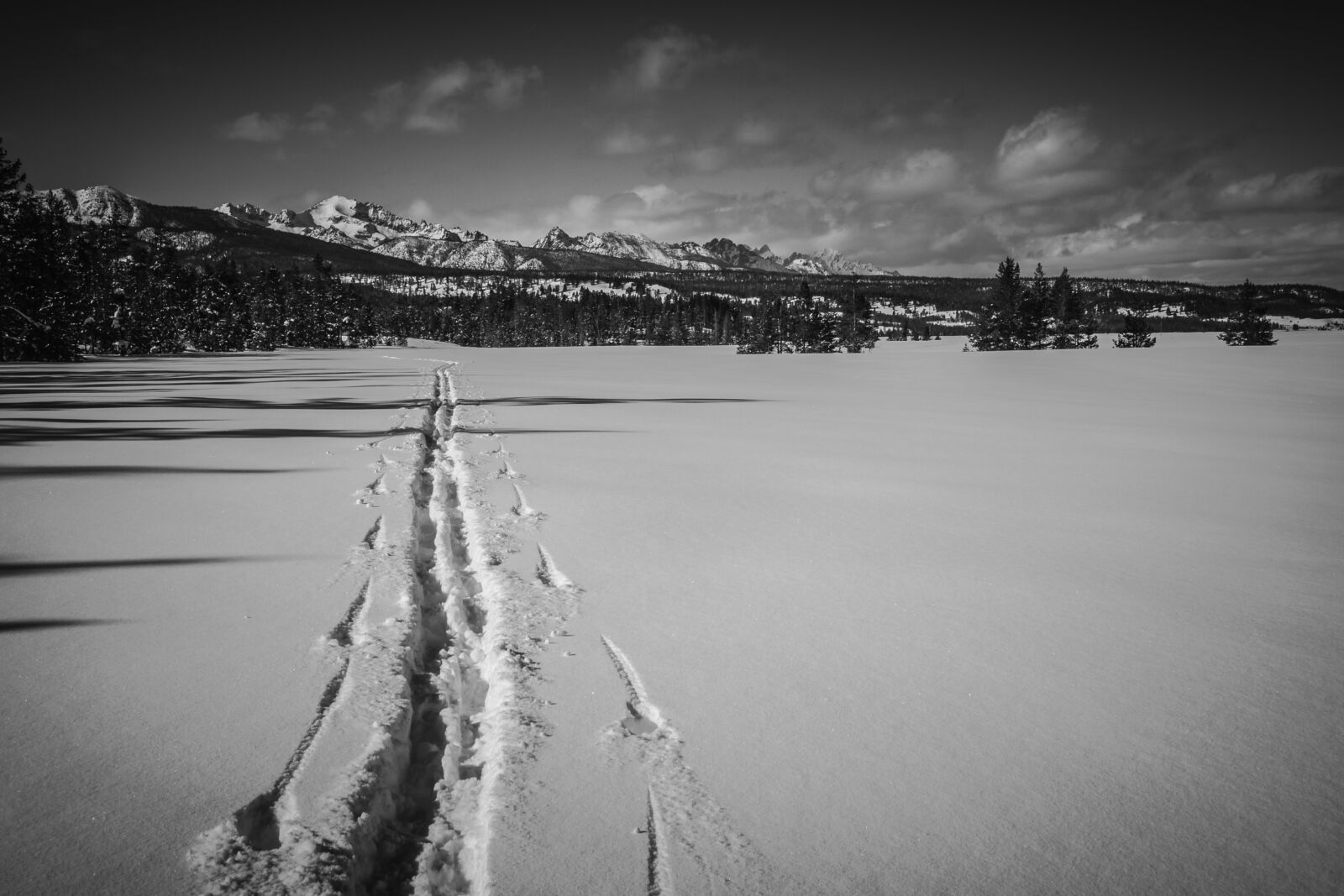
Ski tracks with the Sawtooth Range in the background. Photo by the U.S. Forest Service.
Sawtooth National Forest
Home to the iconic Sun Valley Resort, many come to Idaho’s Sawtooth National Forest for alpine skiing, but stay for cross-country skiing, backcountry skiing, and snowshoeing.
In the Sawtooth National Recreation Area, the North Valley Trails system provides miles of groomed cross-country ski and snowshoe trails that feature diverse terrain and incredible views of the surrounding Boulder Mountains. If you are looking for a more secluded experience, try the Sawtooth Wilderness, home to some of the most epic backcountry ski terrain in the country.
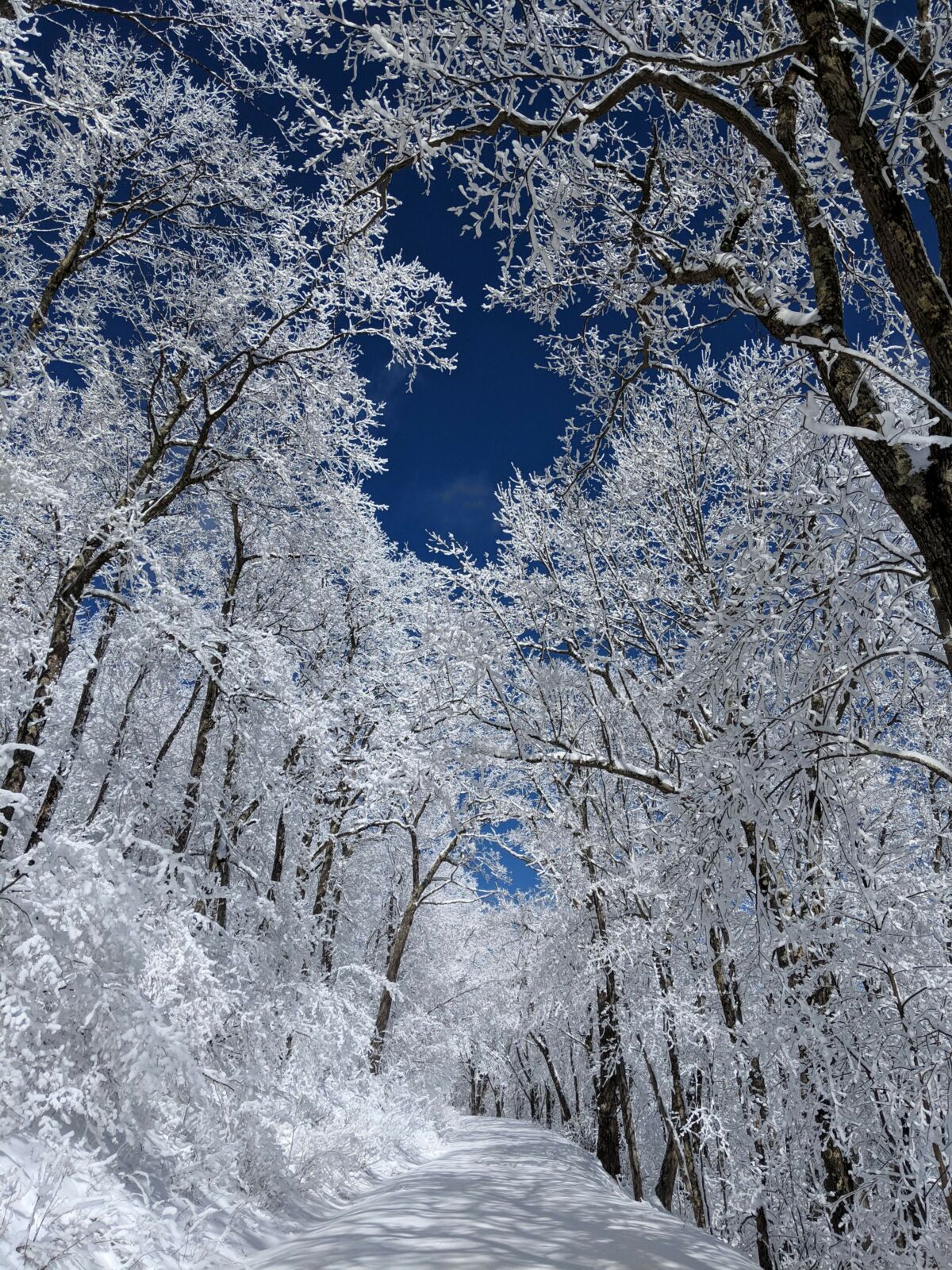
Snow covered trail on Monongahela National Forest. Photo by Timothy Sergreti.
Monongahela National Forest
High in the Allegheny Mountains of West Virginia, the Monongahela National Forest gets more than enough snow each winter to transform into a skier’s paradise. Explore open fields and secluded forests on ungroomed trails, or traverse the gentle rolling hills and steeper slopes of unplowed, Forest Service roads.
The White Grass Ski Touring Center’s trail network provides access to the 17,371 acre Dolly Sods Wilderness, a plateau laced with backcountry trails that take adventurous skiers through 1,200 vertical feet of slopes and glades. Easily accessible by major highways and bursting with diverse and beautiful terrain, it is easy to see why Monongahela National Forest is one of the most popular Nordic skiing destinations in the East.
Ice Sports
Snow isn’t the only new surface for winter adventurers to explore – ice can transform lakes and waterfalls into new landscapes for climbing, fishing, skating, and other ice sports.
Before heading out on any ice, test the thickness with an ax, portable drill, or ice pick, unless you know for certain the ice is thick enough. If a single blow reaches water, stay off the ice (you can read more about ice safety here).
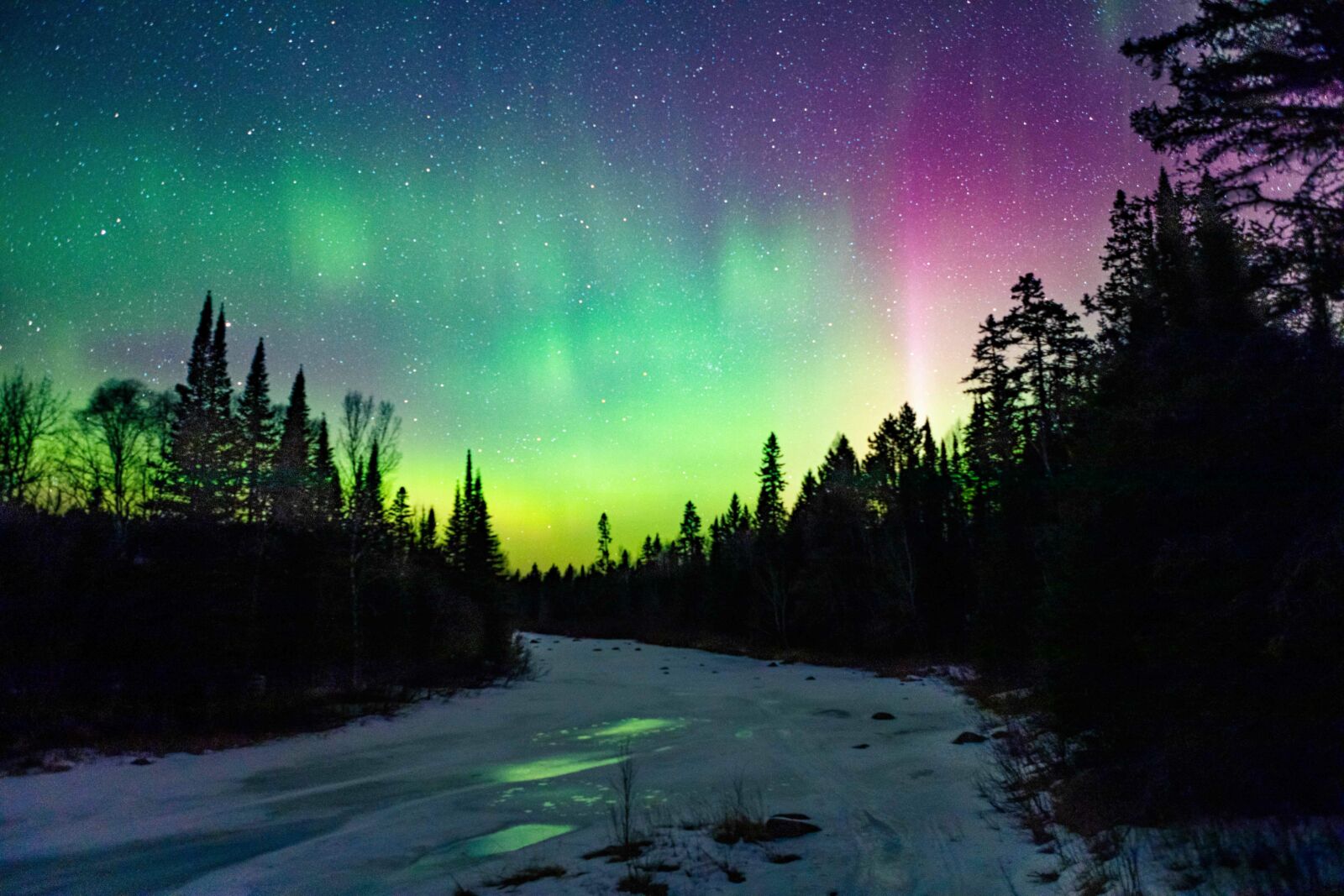
Northern lights over the Superior National Forest. Photo by Tali Neidenfeuhr.
Superior National Forest
In northern Minnesota, the Superior National Forest sits at the southernmost edge of the boreal forest ecosystem. In the winter, the Forest’s thousands of inland lakes freeze into a winter wonderland for ice skating, fishing, and other ice sports.
The solitude and beauty of ice fishing on the Boundary Waters Canoe Area Wilderness (BWCA) is hard to beat. Walleye, northern pike, and crappies are plentiful, while lake and brook trout are prized by skilled anglers for their fight. The BWCA is also an International Dark Sky Sanctuary. In the long, clear nights of winter you have a good chance of seeing the Northern Lights.
--------
Cover photo of Custer Gallatin National Forest by the U.S. Forest Service.
The National Forest Foundation’s Ski Conservation Fund gives ski areas and lodges an easy way for guests to be stewards of the lands they enjoy. Ski-related businesses collect small, voluntary donations from their guests to support conservation and restoration work on local National Forests. Together with businesses and forest visitors, we meet local conservation challenges—whether improving wildlife habitat, securing riverbanks, planting native seeds, or fixing trails.

